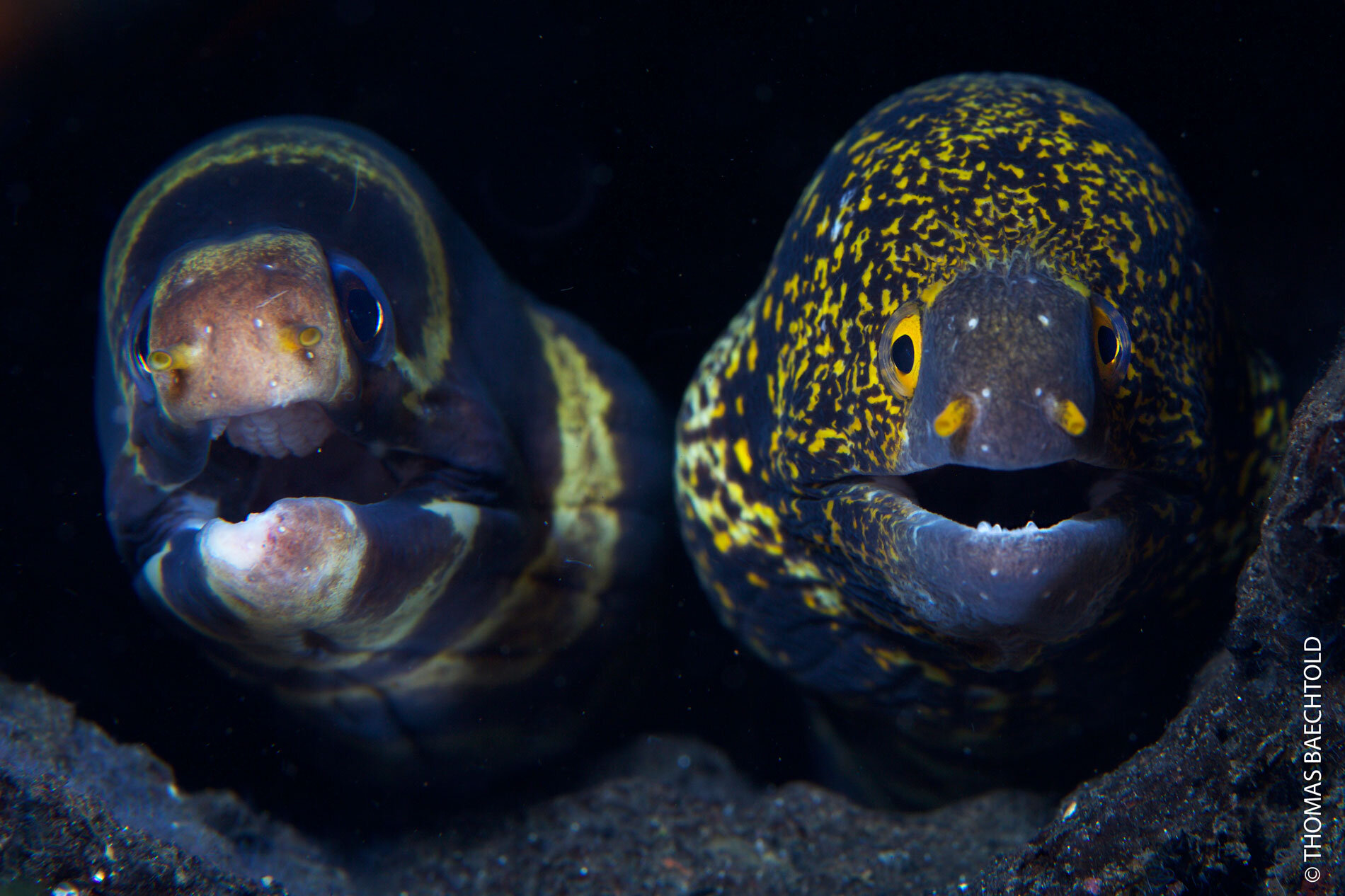Wild Encounters: Moray Eels
Morays, the scary-looking Aliens of the deep, are one of the ocean's most fascinating and feared predators. Their appearance can be intimidating, and when you suddenly spot one while cruising along a reef, it can stop you in your tracks. Due to the small size of their gills and poor eyesight, morays have to continuously open and close their mouths in a gaping fashion to maintain a flow of water to facilitate respiration, which is often mistaken as aggressive behavior.
Some have Pharyngeal jaws, a second set of jaws contained within their pharynx, to grab, hold and pull the prey down their throat, which was the inspiration for the scary and somewhat intimidating Xenomorph creature in the '79 Alien movie.
You can find these carnivores hiding in shallow reefs and caves in tropical and temperate waters on almost all our diving and snorkeling expeditions worldwide. They hunt mainly at night when they leave the reef's protection in search of fish, crabs, or cephalopods. A great place to see and photograph them during the day is at cleaning stations, where cleaner shrimp and wrasse feed on the parasites.
There are over 100 different species. In our opinion, there is no better place to see the incredible diversity of eels than in Indonesia, where you can come across delicate Ribbon eels, Garden eels, Snake eels, and the most commonly seen, the ferocious-looking, giant morays.
Wild Encounters Video copyright © 2021 Wild Earth Expeditions / Filmed and edited by Natalia Baechtold / Presented by Thomas Baechtold
Capture Info
The photo of a Ribbon eel (Rhinomuraena quaesita) was taken on a muck diving expedition to Ambon in Indonesia by Thomas Baechtold.
Camera: Canon EOS 5D Mark III / Lens: Canon EF 100mm f2.8 Macro / ISO: 200, F-stop: f18, Shutter speed: 1/200
I love Ribbon eels, and it always makes my heart sing when I come across one of these delicate eels on a dive in the tropics. The young are black, but the mature adults develop a gorgeous iridescent blue and yellow body color. They have unique feathery flared nostrils to enhance smell and dance in and out of their sandy hole when searching for food.
It can be tricky to get the perfect close-up shot because if they feel threatened, they will retreat into their sandy burrow, not to re-emerge until you're gone. You have to approach slowly, gain their trust, and then it's often a waiting game. The critical thing is to make sure you have your strobes set high and out to the sides to light up the eel evenly from both sides and have your focus always set for the eyes. You want to shoot with a high f-stop number when shooting macro, so the entire head, including the jaw and eyes, are in focus.
Live Lecture Series
Forays with Morays
Presented by Robin Aiello
I love moray eels - but you probably don’t. You probably think they are cranky, aggressive, and dangerous critters – but they’re not! They’re actually usually quite shy! Morays are one of the most perfectly adapted fish for living tucked in amongst the coral without getting scratched. Come join Robin and learn more about these fascinating critters.
Sunday 28th March 2021
Register 8:00 (GMT-4:00 Eastern US & Canada) Check event times
Register 20:00 (GMT-4:00 Eastern US & Canada) Check event times
Click the link next to your preferred time slot to register. Sign-up required.
When registering, you can select your time zone and save the date to your calendar. After registering, you will receive a confirmation email containing details for joining the live event.




